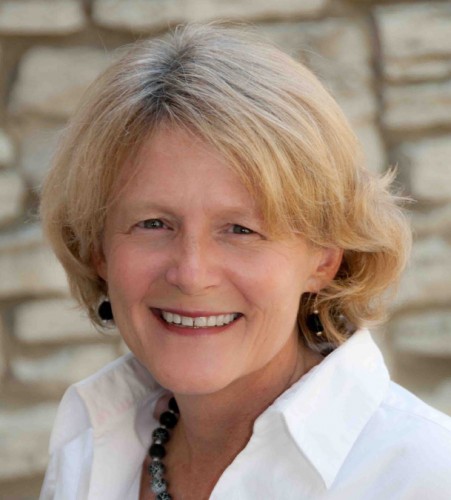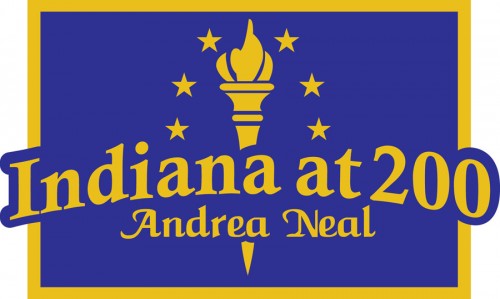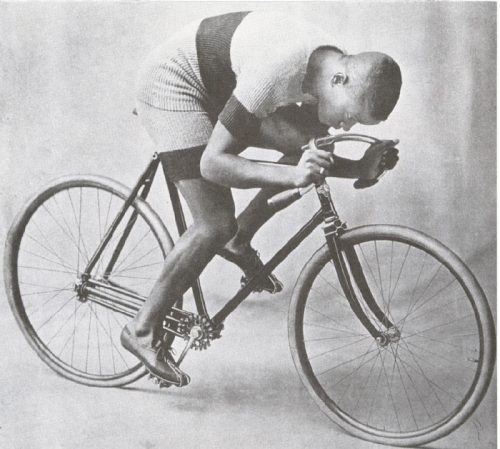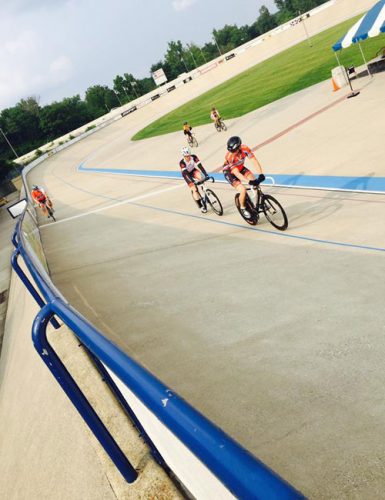Indiana at 200: Fastest Cyclist In The World

Andrea Neal
by Andrea Neal
Dubbed the “colored cyclone” by newspaper reporters of the early 1900s, Hoosier Marshall W. “Major” Taylor was a champion cyclist whose speed was surpassed only by railway locomotives.
Despite achieving international fame — and defying bigotry and Jim Crow segregationist practices — Taylor died penniless and alone at 53, a forgotten sports hero.
“Major Taylor’s name should be like Jackie Robinson’s. Sure, Robinson broke down barriers in major-league baseball, but Taylor, he broke down barriers in sports half a century earlier,” said Lynne Tolman, president of the Major Taylor Association Inc., a nonprofit group in Worcester, Mass., a city Taylor adopted as his home.
“He was largely forgotten for much of the 20th century,” Tolman said. “We’re working on turning that around.”
 Born in Indianapolis in 1878 to Saphronia and Gilbert Taylor, young Marshall was raised and educated for several years by a wealthy white family who employed his father as a coachman. The family gave him a bicycle.
Born in Indianapolis in 1878 to Saphronia and Gilbert Taylor, young Marshall was raised and educated for several years by a wealthy white family who employed his father as a coachman. The family gave him a bicycle.
When he was just 13, Taylor was hired to perform cycling stunts outside a bike shop. He likely earned the nickname “Major” because of the soldier’s uniform he wore when he performed. Around the same time, he won his first amateur race — a 10-mile road course.
While white promoters let Taylor compete in trick bicycle competitions, he was kept out of local riding clubs due to his race, “and many white cyclists were less than welcoming to the black phenom,” according to Gilbert King in the September, 2012, issue of Smithsonian Magazine.

Major Taylor was known for his aerodynamic bicycle posture with his back flat and his eyes downward. (Photo courtesy Major Taylor Association.)
In 1895, Taylor moved to Worcester with his employer and racing manager, Louis “Birdie” Munger, who planned to build a bike factory there. He found people in the East more tolerant.
“I was in Worcester only a very short time before I realized there was no such race prejudice existing among the bicycle riders there as I had experienced in Indianapolis,” Taylor wrote in his 1929 autobiography, “The Fastest Bicycle Rider in the World.”
By 1898, Taylor held multiple world records. In 1899, he won the world one-mile professional cycling championship. He won U.S. circuit championships in 1899 and 1900.
 From 1901 to 1904, he raced all over Europe, Australia, New Zealand and the United States. He retired in 1910 at 32. Along the way, “he encountered closed doors and open hostilities and faced it all with dignity. He’d go on the racing circuit, couldn’t get a hotel room, a meal,” Tolman said.
From 1901 to 1904, he raced all over Europe, Australia, New Zealand and the United States. He retired in 1910 at 32. Along the way, “he encountered closed doors and open hostilities and faced it all with dignity. He’d go on the racing circuit, couldn’t get a hotel room, a meal,” Tolman said.
Although he made a great sum as a racer, Taylor had little success as a businessman. Debts and health issues tapped his savings in the 1920s. With a failed marriage, he moved to Chicago in 1930 and lived at the YMCA. His health deteriorated and he died in 1932 in the charity ward at Cook County Hospital. He was buried in a pauper’s grave. Sixteen years later, a group of biking enthusiasts had his remains moved to a more honorable site at Mount Glenwood Cemetery, Glenwood, Ill.
Taylor’s Indianapolis hometown gave him belated recognition for his achievement, naming in his honor the Major Taylor Velodrome, a world-class bicycle racing track built in 1982. The track is home to the Marian University cycling team and hosts competitions, clinics and open-ride sessions. It has the distinction of being the first building paid partly by taxpayers in Indianapolis to be named for an African-American.
Directions: The Major Taylor Velodrome is located at 3649 Cold Spring Road across from Marian University in Indianapolis.
